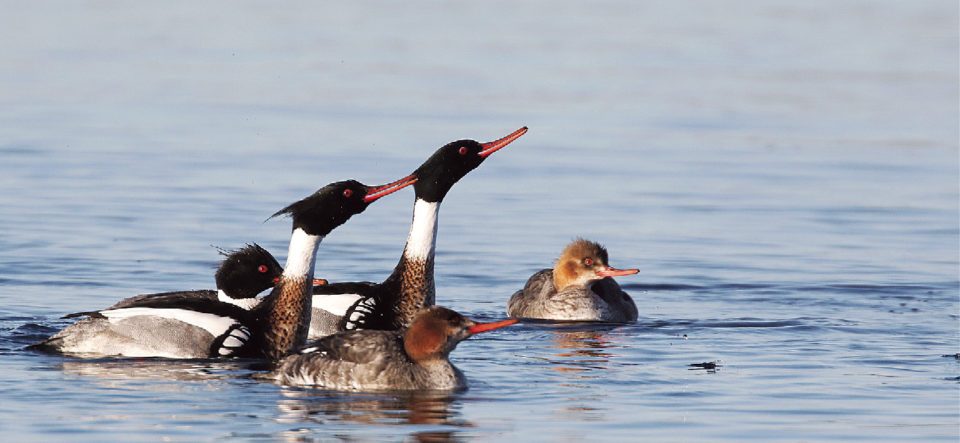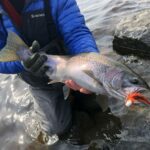Winter is a great time for birding in the Northern Wilds. Snowy owls dip down from Canada in search of food. Birders “flock” to places such as the Sax-Zim Bog to observe boreal species, such as boreal chickadees at the southern extent of their range. And the forests are alive with the hammering of common and not-so-common woodpecker varieties. However, one winter treat is watching hardy waterfowl brave sub-zero temperatures on Lake Superior.
Depending on ice conditions, the inland sea sometimes harbors waterfowl all winter long. Birders are likely to see common species such as mallards, buffleheads, common goldeneyes, hooded mergansers and common mergansers. Less common are black ducks, Barrow’s goldeneyes, eiders, and red-breasted mergansers. If you’re especially lucky, you may observe a sea duck species without traveling to the sea. A number of sea ducks overwinter on the Great Lakes. Spotting gorgeous long-tailed ducks is a real possibility if you put in some time. You may also see some of the scoter varieties and on rare occasions, one of the most beautiful of North America’s waterfowl species: the harlequin duck.
“It’s certainly a good spot for some of the oddball species; things like scoters, harlequin ducks and longtails,” said Steve Cordts, Minnesota DNR waterfowl staff specialist.
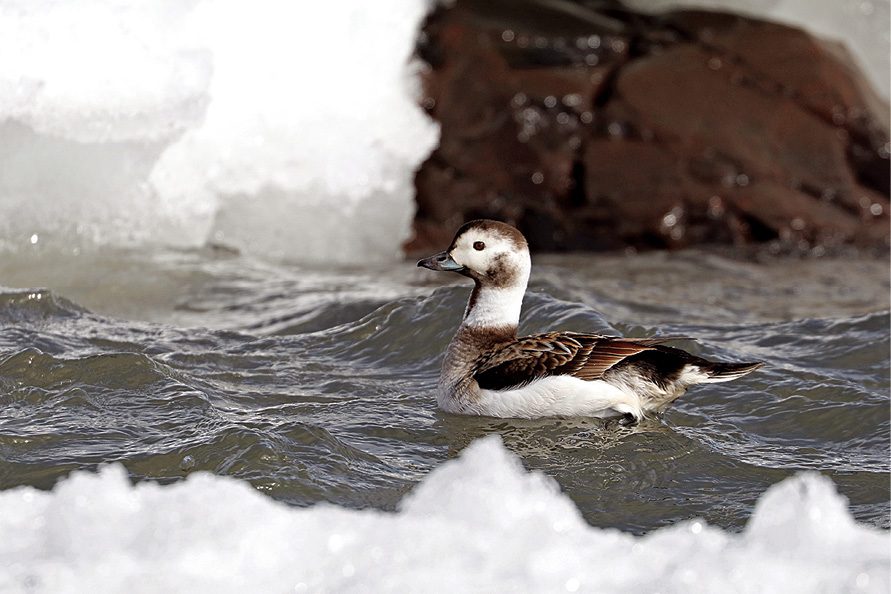
Cordts said these species are well adapted for frigid winter conditions.
“They’re pretty well insulated,” he said. “They’re pretty well adapted. If there’s water for them, they seem to do just fine.”
Most of the waterfowl species you see on Lake Superior in winter, with the possible exception of mallards and common goldeneyes, probably traveled great distances to reach the lake in late fall or early winter.
“We do have a pretty good number of goldeneyes that nest in Minnesota,” Cordts said. “Some are probably local birds. Most of the others nest further north in Canada.”
Part of the appeal for sea duck species, besides the open water, is the food found in Lake Superior.
“Most of the sea ducks tend to eat things like clams and snails,” Cordts said. He added that invasive zebra mussels probably serve as a food source for these birds. Other species, particularly mergansers, feed primarily on small fish.
Cordts said sea ducks may move around throughout the day.
“They spend part of the day out in deeper water roosting,” he said. “In mornings and evenings, they’ll fly toward shallower water to feed.”
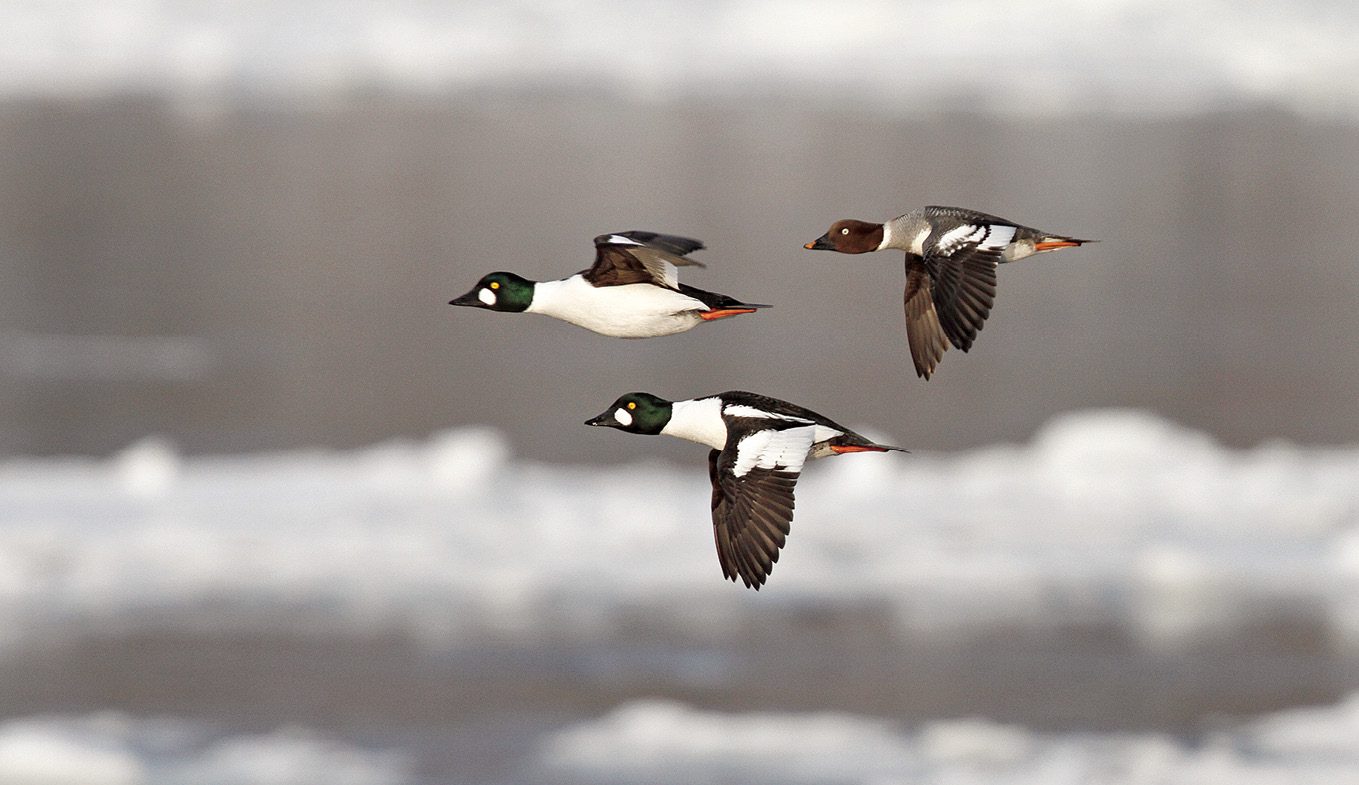
Of course, Lake Superior drops off quickly, so birds generally don’t have to travel far to reach deep water. Long-tailed ducks are the deepest divers among all ducks; they have been known to dive down 200 feet while feeding. They are probably the most common sea duck species on Lake Superior. You’ll know an adult male when you see it in winter: as the name implies, drakes sport a pair of long sprigs. These fully-primed winter males also have white-and-black coloration, amber eyes and a pink ring on their bill. When calling, longtails make a cry that sounds like laughter.
Canal Park in Duluth often harbors mallards and black ducks. These closely related species do interbreed. Canal Park is also a good place to see goldeneyes. A few years ago, a tufted duck—a Eurasian species that closely resembles our local ring-necked duck—was sighted in the area.
Park Point and the Superior Entry are good places to see goldeneyes. They’re almost always common goldeneyes, but if you’re lucky, you may see a Barrow’s goldeneye mixed in. Males of this western species have a darker upper body and a white crescent on their face, whereas common goldeneyes have white circles on their faces.
Prior to freeze-up, the sheltered waters of Allouez Bay on the Superior side harbored a wide variety of diving and dabbling ducks. Many years ago, a smew—a Eurasian merganser species—was spotted in Allouez Bay.
Mallards frequent the waters in front of the Lester River any time in winter when there’s no ice. You can sometimes spot long-tailed ducks there or from the adjacent Brighton Beach as well.
Moving up the shore, Stony Point and the beach next to the Knife River Marina are good places to observe sea ducks. White-winged scoters, harlequin ducks and longtails have all been observed around Knife Island.
Agate Bay in Two Harbors often has waterfowl if it’s not frozen. Walking out on the breakwall could put you within spotting distance of longtails and a pair of hen harlequin ducks spent the winter there just a few years back. The harbor also frequently holds mallards, goldeneyes and buffleheads as well. Canada geese are abundant all summer long and during spring and fall migration, an occasional snow goose mixes in with the resident birds.
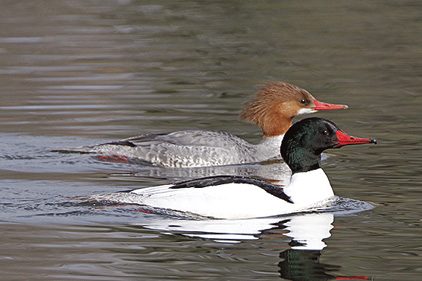
Birds are where you find them, making ebird.org a great resource for birders. You can also post your observations to this site and learn about other birds observed in your area. Another great resource for North Shore birders is the Duluth Audubon Duluth/Superior birding map, which lists a number of places to spot birds and the species you may encounter in each location. Check it out at: duluthaudubon.org.
Observing birds is always a treat and we have the unique opportunity to watch some birds usually associated with coastal environments right in our own back yard. Make this the year you add some sea duck species to your birding life list.


